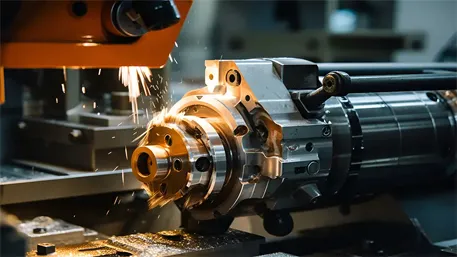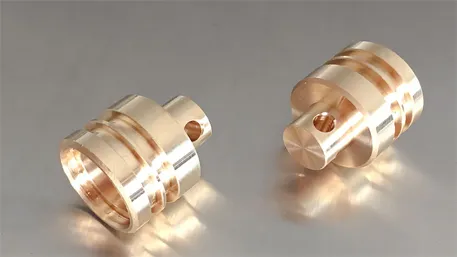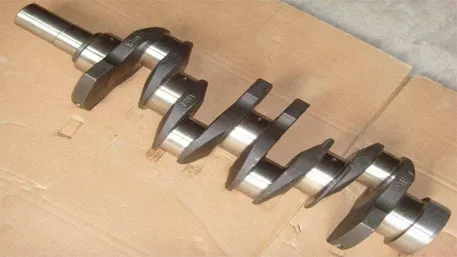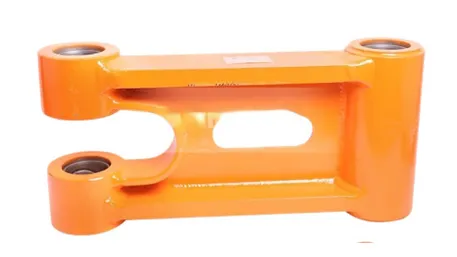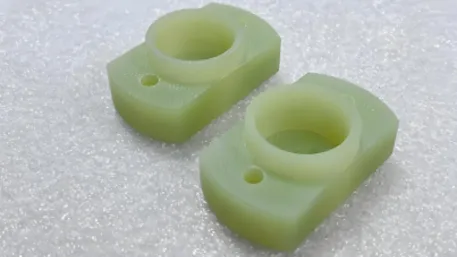Custom CNC aluminum alloy housings aren’t merely “casings” for your devices—they’re the ideal combination of sturdiness, accuracy, and brand character. Whether you’re developing a high-end industrial sensor, a sleek consumer electronics gadget, or a durable medical device, these housings are engineered to address key pain points: safeguarding internal components from impacts and dust, fitting seamlessly with circuit boards or wiring, and adding a premium, professional appearance that differentiates your product from competitors.

Crafted via computer-controlled CNC machining, they transform raw aluminum alloy into tailored solutions—think ultra-narrow 0.01mm tolerances for electronic devices, rust-resistant surfaces for outdoor equipment, and ergonomic shapes for handheld tools. Every cut, hole, and finish is designed to match your device’s unique requirements, making it both functional and memorable.
1. Materials: Selecting the Right Aluminum Alloy for Your Housing
Aluminum alloys differ in strength, ease of machining, and resistance—choosing the appropriate one depends on your device’s use scenario (e.g., indoor vs. outdoor, lightweight vs. heavy-duty). Below are the top options, tailored to practical needs:
-
6061-T6 Aluminum Alloy: The most versatile choice for most custom CNC housings. It balances ease of machining (simple to cut into intricate shapes like port openings or mounting brackets), strength (tough enough to withstand drops for handheld devices), and affordability. It also accepts surface finishes (such as anodization) beautifully, making it ideal for consumer electronics (e.g., smart thermostat enclosures) or office equipment. Its moderate rust resistance works well for indoor or sheltered outdoor use.
-
7075-T6 Aluminum Alloy: The “high-strength workhorse” for demanding situations. With twice the strength of 6061, it’s perfect for industrial devices (e.g., factory sensors, heavy machinery control panels) or outdoor gear (e.g., rugged GPS enclosures) that face frequent impacts or harsh conditions. While it’s slightly harder to machine than 6061, its excellent fatigue resistance ensures the housing won’t weaken over time—critical for long-lasting industrial equipment.
-
5052-H32 Aluminum Alloy: The top pick for rust-prone environments. It boasts superior resistance to saltwater, humidity, and chemicals, making it ideal for marine devices (e.g., boat navigation systems), outdoor IoT sensors, or medical equipment that requires frequent cleaning. It’s also lightweight and flexible enough to form subtle curves (great for ergonomic handheld housings) while retaining sufficient strength to protect internal parts.
-
2024-T3 Aluminum Alloy: Best for high-stress, lightweight needs. It’s stronger than 6061 and lighter than 7075, making it a top choice for aerospace or automotive electronics (e.g., in-car infotainment enclosures) where weight and durability are equally important. Note: It’s less rust-resistant than 5052, so it often needs extra surface protection (like powder coating) for outdoor use.
2. Techniques: Creating Precision Housings With CNC & Beyond
Custom CNC aluminum alloy housings rely on two key pillars: extremely precise CNC machining (to get the shape right) and customized surface finishes (to enhance performance and style). Here’s how we bring your design to life:
CNC Machining Techniques (The “Shape-Creation” Step)
-
3-Axis CNC Milling: For basic to moderately intricate housings (e.g., rectangular sensor enclosures with simple port holes). It cuts along three axes (X, Y, Z) to create flat surfaces, straight edges, and standard holes—quick and economical, making it perfect for small-batch orders or straightforward designs.
-
5-Axis CNC Milling: For complex, 3D-shaped housings (e.g., curved handheld device shells, housings with angled ports or internal ribs). It adds two rotational axes, allowing the machine to reach every surface without repositioning the aluminum—critical for complex structures like “one-piece” housings that eliminate assembly gaps (which trap dust or water). This technique achieves tolerances as tight as 0.005mm, ensuring the housing fits your internal components perfectly.
-
CNC Turning: For cylindrical or rounded housings (e.g., portable speaker shells, cylindrical sensor casings). The machine spins the aluminum blank while cutting tools shape it—creating smooth, uniform curves and precise threads (for screw-on lids or mounting points). It’s faster than milling for rounded designs and ensures consistent thickness across the housing.
Surface Finish Techniques (The “Performance & Style” Step)
-
Anodization: The most popular finish for CNC aluminum housings. It forms a thin, porous oxide layer on the surface that’s scratch-resistant, rust-resistant, and customizable in color (from matte black to bright silver, or even brand-matching shades). Type II anodization (thin layer) works for consumer electronics; Type III (hard anodization) adds extra durability for industrial or outdoor devices (e.g., construction equipment sensors).
-
Sandblasting: Creates a soft, matte texture that hides fingerprints and minor scratches—perfect for high-touch devices like handheld scanners or smart home controllers. It’s often paired with anodization for a “premium, non-slip” feel and works with all aluminum alloys.
-
Powder Coating: Adds a thick, durable layer for heavy-duty protection. It’s ideal for industrial housings (e.g., factory control panels) or devices used in messy environments (e.g., workshop tools), as it resists chipping, chemicals, and UV damage. It’s available in matte, glossy, or textured finishes and can match almost any Pantone color.
-
Laser Engraving: Adds permanent brand marks, serial numbers, or safety labels directly onto the housing. Unlike printing, it won’t fade or scratch off—critical for medical devices (which need permanent compliance labels) or industrial equipment (which requires traceable serial numbers).
3. The Custom CNC Aluminum Alloy Housing Production Process
Creating a custom housing means aligning each step with your device’s specifications—no guesswork, just precision. Here’s our step-by-step process:
-
Device Needs & Specification Analysis: First, we ask: What’s inside the housing? (Circuit boards, wiring, batteries?) Where will it be used? (Indoors? Saltwater environments? Industrial floors?) What tolerances do you require? (e.g., 0.01mm for a port that fits a USB-C connector.) This tells us key details—like needing 5052 alloy for a marine sensor, or 5-axis milling for a curved handheld housing.
-
Design & 3D Modeling: Our engineers convert your specifications into a detailed 3D model (using CAD software like SolidWorks). We add critical features: mounting points for internal components, clearance for wiring, drainage holes for outdoor devices, and ergonomic grips for handheld use. We also conduct “fit verification” to ensure the housing won’t conflict with your device’s internals—no last-minute surprises.
-
Prototype Creation & Testing: We build a physical sample (using 3D printing for quick iterations, or CNC machining for final material testing) so you can: Check if internal components fit seamlessly; Test the housing’s durability (e.g., dropping it for handheld devices); Verify surface finish (e.g., does the anodized color match your brand?). We adjust the design until every detail works.
-
Material Selection & Preparation: Based on your needs, we pick the aluminum alloy (e.g., 6061 for a consumer gadget, 7075 for industrial use) and cut it into “blanks” (raw aluminum pieces) slightly larger than the final housing—leaving room for machining. We also inspect the blanks for defects (like dents or impurities) to avoid issues later.
-
CNC Machining: We load the blanks into 3-axis or 5-axis CNC machines (programmed with your 3D model). The machine cuts, drills, and shapes the aluminum with extremely precise tools—creating ports, mounting holes, internal ribs, and outer curves. We monitor the process in real time to ensure tolerances stay within your specifications (e.g., a 0.008mm gap for a waterproof seal).
-
Surface Finishing: After machining, we clean the housing to remove metal shavings, then apply your chosen finish (anodization, sandblasting, powder coating). For medical or food-grade devices, we add extra cleaning steps to meet compliance standards (e.g., FDA, CE).
-
Quality Inspection: Every housing undergoes 3 critical checks:
- Dimensional Accuracy: We use a coordinate measuring machine (CMM) to scan the housing—verifying every hole, curve, and tolerance matches your 3D model (accuracy up to 0.001mm).
- Durability Testing: We test surface finishes (scratch resistance for anodization, chemical resistance for powder coating) and conduct drop tests on handheld housings to ensure they protect internals.
- Fit Testing: We assemble the housing with your actual internal components (or replicas) to confirm a perfect fit—no loose parts or blocked ports.
-
Packaging & Delivery: We package housings in anti-scratch foam or boxes (to protect surface finishes) and ship them—with options for bulk packaging (for manufacturing lines) or individual packaging (for prototype batches).
4. Key Features of Outstanding Custom CNC Aluminum Alloy Housings
Great custom housings don’t just “fit”—they enhance your device’s performance and brand. These features make them stand out:
-
Extremely Tight Tolerances: 0.005–0.01mm precision ensures ports, buttons, and mounting points align perfectly with internal components—no “wiggle” in USB connectors, no blocked speaker grilles.
-
Durable Protection: Aluminum’s natural strength (paired with surface finishes) safeguards internal components from drops (up to 1.5m for 6061 housings), dust, and moisture—critical for devices used in busy offices or rough industrial sites.
-
Lightweight Design: Aluminum is 1/3 the weight of steel, so housings add little extra bulk to handheld devices (e.g., portable scanners) or aerospace electronics—no more “heavy” gadgets that tire users out.
-
Thermal Conductivity: Aluminum dispels heat 10x better than plastic, making it ideal for devices that run hot (e.g., high-performance sensors, mini PCs). The housing acts as a “passive heat dissipator,” keeping components cool without extra fans.
-
Brand Alignment: Custom shapes (e.g., a housing that matches your brand’s logo curve), color-matched anodization, and laser-engraved logos turn the housing into a marketing tool—users recognize your device at a glance.
5. Equipment: Tools for Precision & Uniformity
Great custom CNC aluminum housings depend on equipment that ensures precision, batch after batch:
-
5-Axis CNC Machining Centers: Brands like Haas or DMG MORI—these machines handle complex 3D shapes with 0.001mm consistency, ensuring every housing in your order is identical. They’re equipped with auto tool changers (for fast switching between drills, mills, and cutters) to keep production efficient.
-
Coordinate Measuring Machines (CMMs): For dimensional checks—these laser or touch-probe systems scan the housing and compare it to your 3D model, catching even the smallest deviations (e.g., a 0.002mm off-center hole).
-
Anodization Tanks & Powder Coating Booths: Temperature-controlled tanks for consistent anodization (no uneven color) and electrostatic powder coating booths (for smooth, even layers that don’t chip).
-
Laser Engravers: Fiber laser systems that create permanent, high-contrast marks—ideal for brand logos, serial numbers, or safety labels. They work on all surface finishes (anodized, sandblasted, powder-coated) without damaging the housing.
6. Production: Balancing Precision, Speed, and Quality
When making custom CNC aluminum housings, precision is never compromised—but we still meet your deadlines:
-
Material Traceability: Every aluminum blank comes with a certificate of authenticity (CoA), so you know the alloy is exactly what you ordered (e.g., 7075-T6, not a more affordable alternative). This is critical for compliance in medical or aerospace industries.
-
Batch Uniformity: We use “fixturing” (custom clamps) to hold aluminum blanks in place during machining—ensuring every housing is cut from the same position, with no variation. Computerized programs eliminate human error, so the 100th housing is identical to the first.
-
Waste Minimization: We optimize blank sizes to reduce aluminum scrap, and recycle leftover pieces (aluminum is 100% recyclable) to lower environmental impact. This also keeps costs reasonable for your order.
-
Fast Turnaround: For prototypes, we offer 3–5 day delivery (using CNC machining for final alloy samples) or 1–2 days (using 3D printing for fast fit checks). For bulk orders (100+ units), we deliver in 2–3 weeks—without skipping quality checks.
7. Applications: Where Custom CNC Aluminum Alloy Housings Excel
Custom housings work for every industry where precision, durability, and style matter:
-
Consumer Electronics: Sleek anodized 6061 housings for smart thermostats, portable speakers, or wireless chargers—lightweight, scratch-resistant, and brand-matching.
-
Industrial Equipment: 7075 hard-anodized housings for factory sensors, control panels, or robotics—durable enough to withstand impacts, oil, and dust.
-
Medical Devices: 5052 powder-coated housings for diagnostic tools or portable monitors—rust-resistant (for frequent cleaning) and meets medical standards (FDA, ISO 13485).
-
Aerospace & Automotive: 2024-T3 lightweight housings for in-car infotainment systems or aerospace sensors—strong enough for high stress, light enough to meet weight limits.
-
Outdoor IoT: 5052 anodized housings for weather stations or GPS trackers—resistant to rain, saltwater, and UV rays, ensuring long life in harsh environments.
FAQs: Your Custom CNC Aluminum Alloy Housing Questions Answered
Q1: What’s the minimum order quantity (MOQ) for custom housings?
We offer flexible MOQs—beginning at 1 unit for prototypes (perfect for startups testing a new device) and 50 units for bulk production. For high-volume orders (1,000+), we can discuss lower unit costs.
Q2: How long does it take to make a custom housing?
Prototypes: 3–5 days (CNC-machined in final alloy) or 1–2 days (3D-printed for fast fit checks). Bulk orders (50–500 units): 2–3 weeks. Rush options are available for tight deadlines (e.g., trade show prototypes).
Q3: Can you create waterproof or dustproof housings?
Yes! We add features like rubber gaskets (for seals around lids or ports), drainage holes (for outdoor devices), and tight tolerances (0.005mm gaps) to meet IP65/IP67 standards (dust-tight, water-resistant). We also test housings in pressure chambers to confirm waterproofing.
Q4: Which aluminum alloy is best for my device?
It depends on your use scenario:
- Consumer electronics/indoor use: 6061-T6 (balanced cost, ease of machining, style).
- Industrial/outdoor heavy-duty: 7075-T6 (high strength).
- Marine/chemical environments: 5052-H32 (rust-resistant).
- Aerospace/weight-sensitive: 2024-T3 (strong + lightweight).
Ready to Design Your Custom CNC Aluminum Alloy Housing?
Whether you’re building a consumer gadget, industrial sensor, or medical device—we’ll craft a housing that protects your components, fits perfectly, and elevates your brand. Leave a message below with your device specs (size, use scenario, tolerances, or brand colors), and our team will send you a free 3D design mockup and sample quote. Let’s turn your device from “functional” to “exceptional”—starting with the housing.


